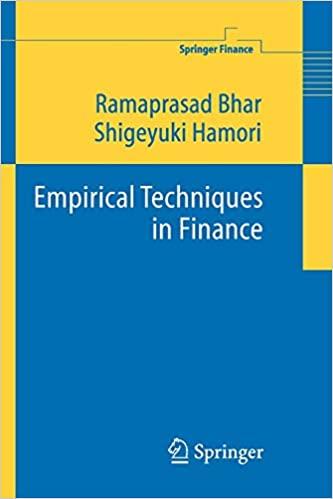Question
Please help me to answer these questions! Thank you in advance. A firm has to choose how to allocate free cash flows among organic growth,
Please help me to answer these questions! Thank you in advance.
A firm has to choose how to allocate free cash flows among organic growth, dividends, and share buybacks. If a firm that has a free cashflow of $1 million has the opportunity to: invest $1 million in a new product that will earn cashflow with a present value of $0.9 million; offer a $1 dividend to each of its one million shareholders; or buy back 100,000 shares at $10 each, choose all options that are not value-creating.
- Conduct the share buyback program costing $1 million.
- Offer a $0.50 dividend and use the remaining $500,000 to purchase 50,000 shares.
- Distribute $1 million in dividends.
- Use the $1 million to invest in the new product.
- Retain $1 million for other investment opportunities.
When a firm is announcing that it is acquiring another firm, and when shares of both firms are traded on the market, share prices of the firms would move in different directions, depending on the views of the market regarding value transfer. What is the best interpretation when the price of acquirer's stock dropped by 20 percent, resulting in the loss of $40 million in market capitalization, while the price of target company's stock jumped by 40 percent, resulting in a gain of $20 million in market capitalization.
- Value destruction and transfer of wealth from acquirer to target
- Value destruction and transfer of wealth from target to acquirer
- No change in value nor transfer of wealth
- Value creation and transfer of wealth from acquirer to target
- Value creation and transfer of wealth from target to acquirer
Choose all that are appropriate.
- If two firms are in the same industry, the firm with a higher P/E ratio is expected to have more growth opportunities.
- The value of a firm can be calculated from the firm's balance sheet by subtracting the sum of all liability items from the sum of all the assets items.
- An assumption of discount rate of 10 percent and 3 percent growth would be broadly consistent with a multiple of enterprise value to free cash flow of 13.0.
- The cost of debt of a firm can be calculated by multiplying the firm's current ratio by the firm's credit rating and add the risk-free rate.
- One way to calculate the cost of equity of a firm is to take the risk-free rate and add the market risk premium adjusted by the firm's beta.
Step by Step Solution
There are 3 Steps involved in it
Step: 1

Get Instant Access to Expert-Tailored Solutions
See step-by-step solutions with expert insights and AI powered tools for academic success
Step: 2

Step: 3

Ace Your Homework with AI
Get the answers you need in no time with our AI-driven, step-by-step assistance
Get Started


